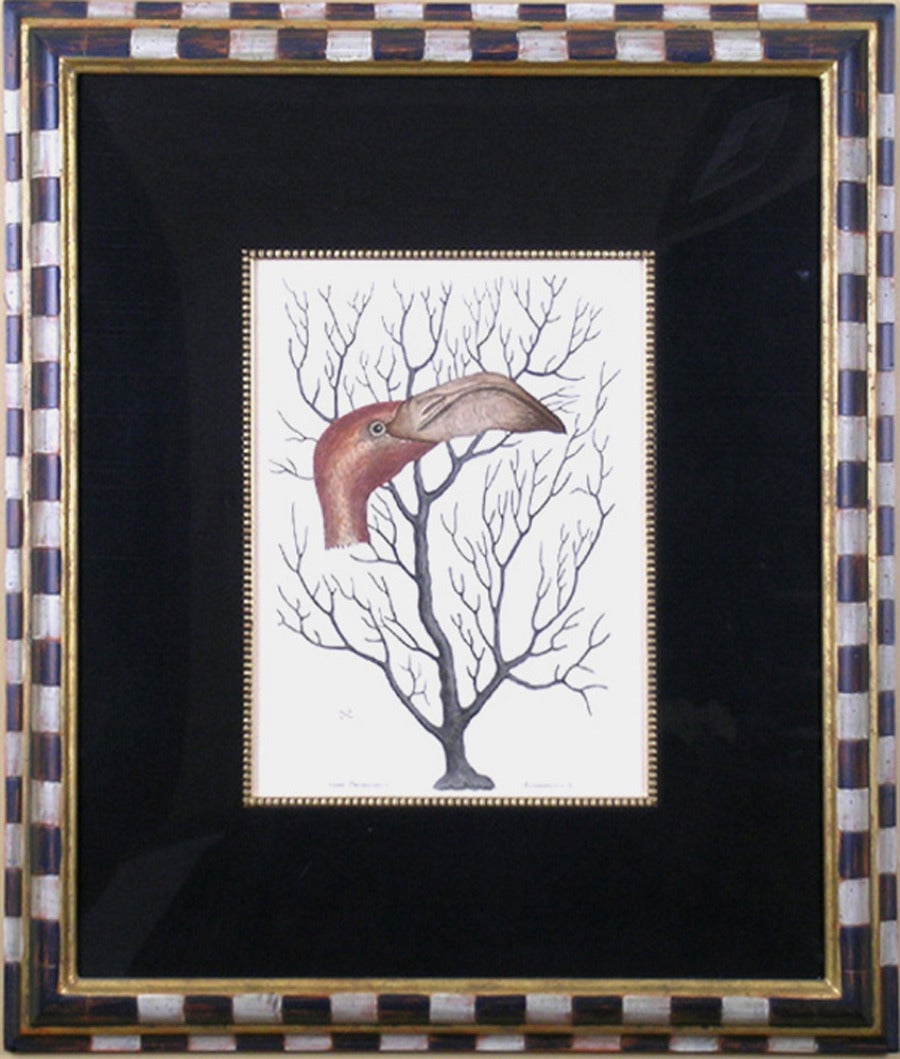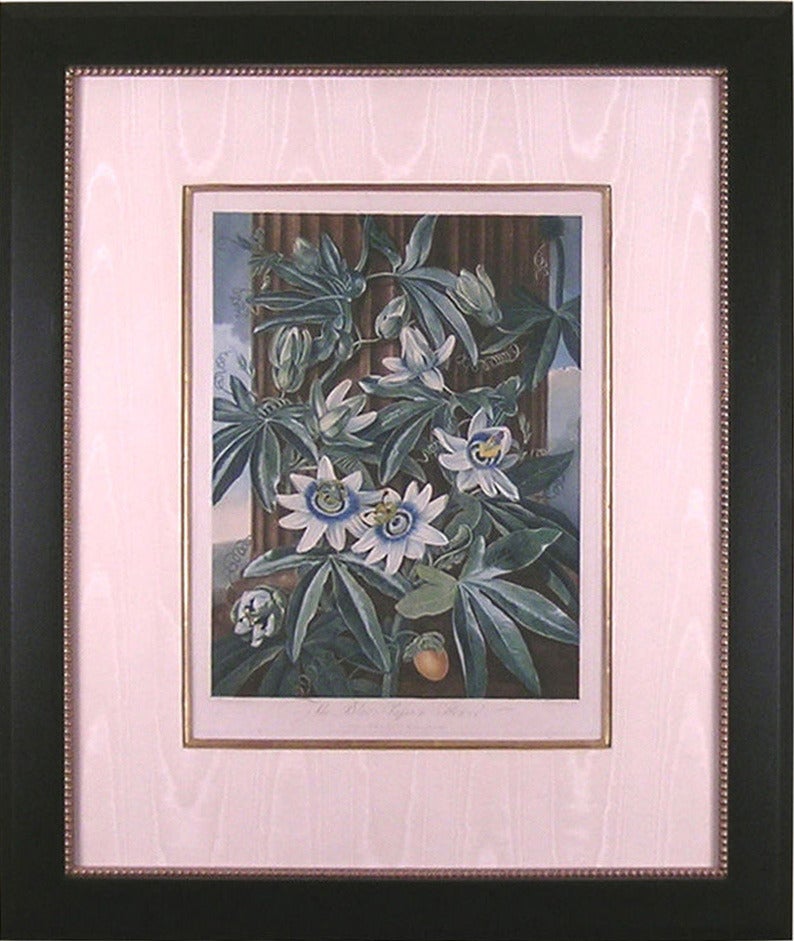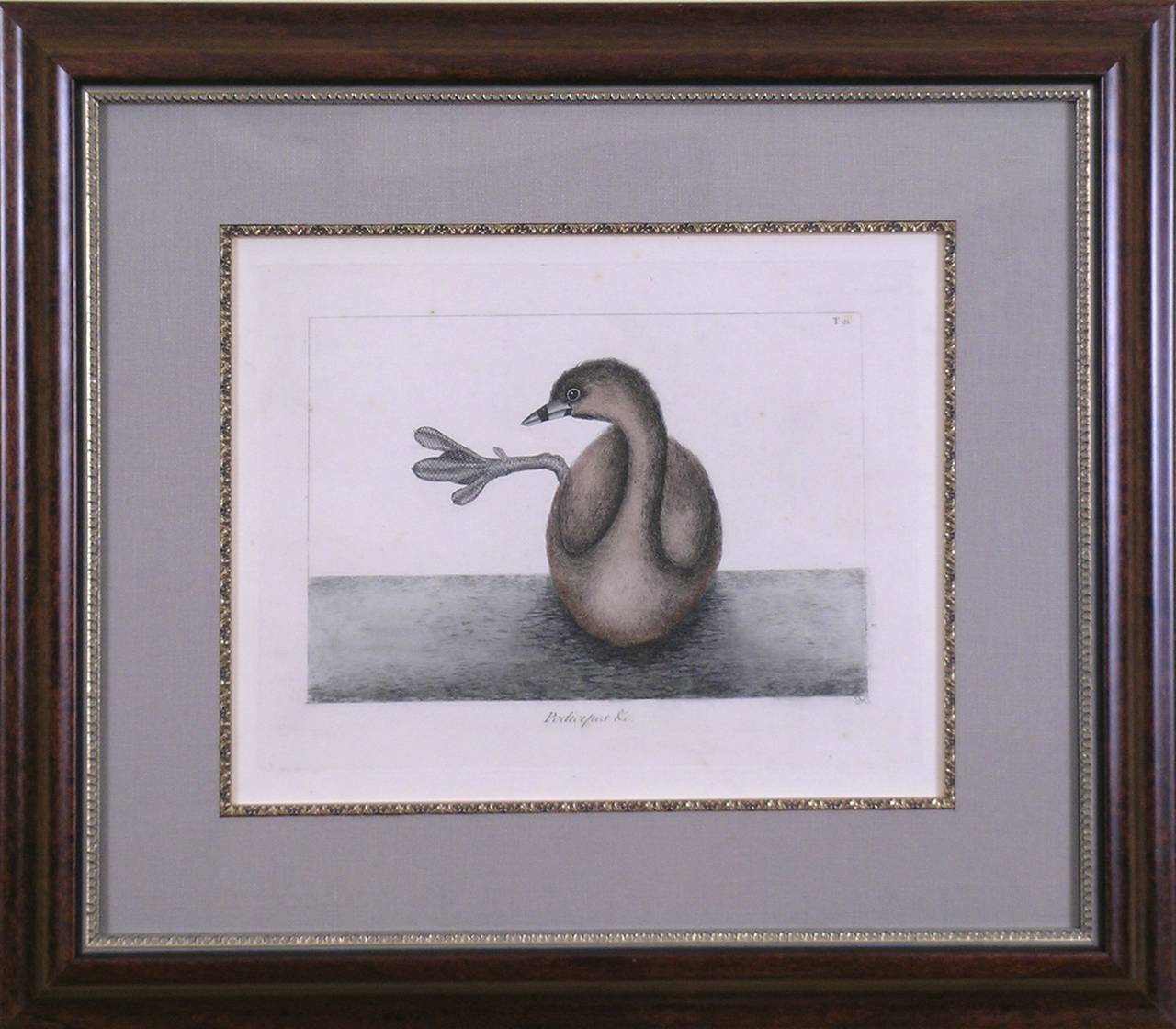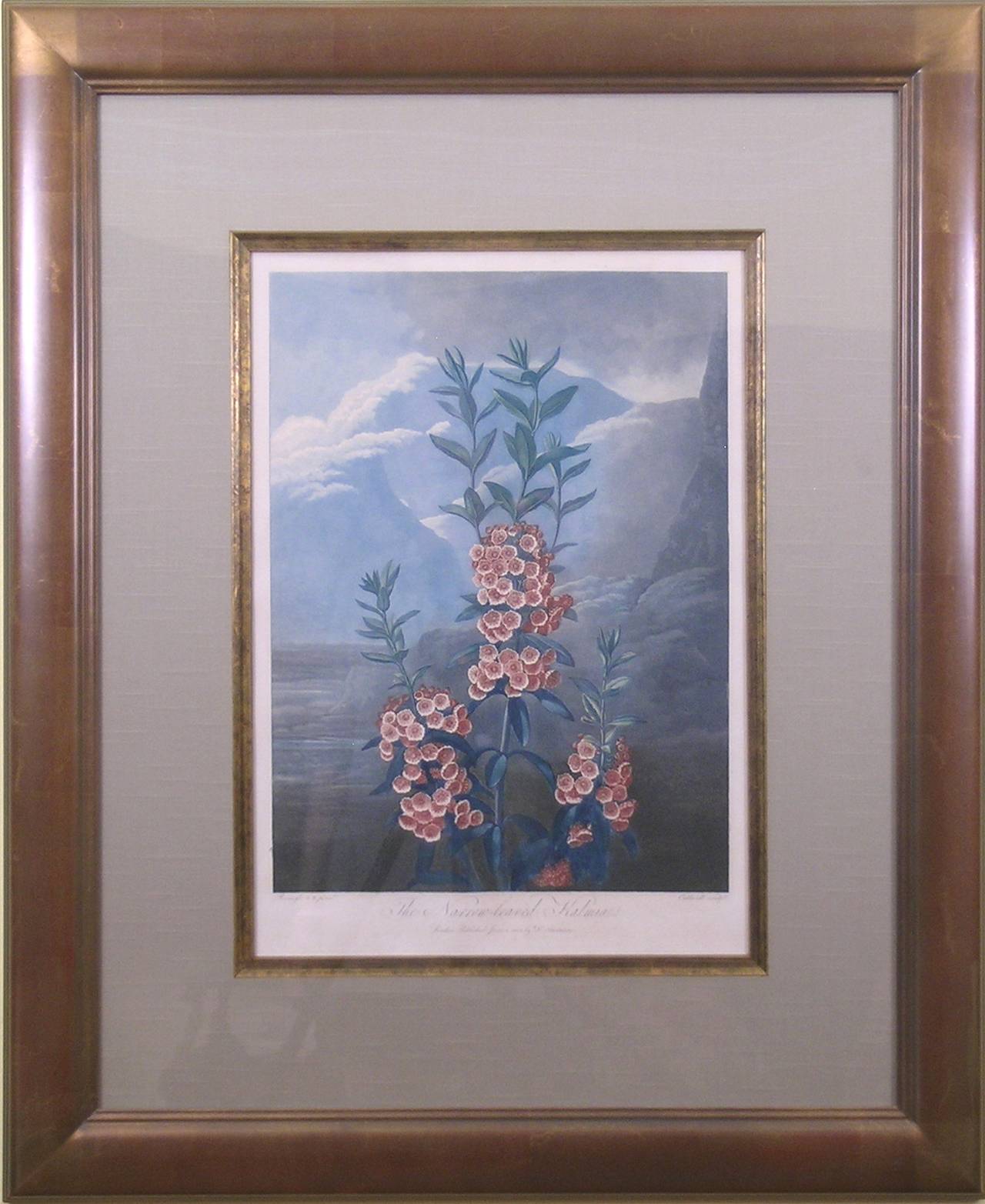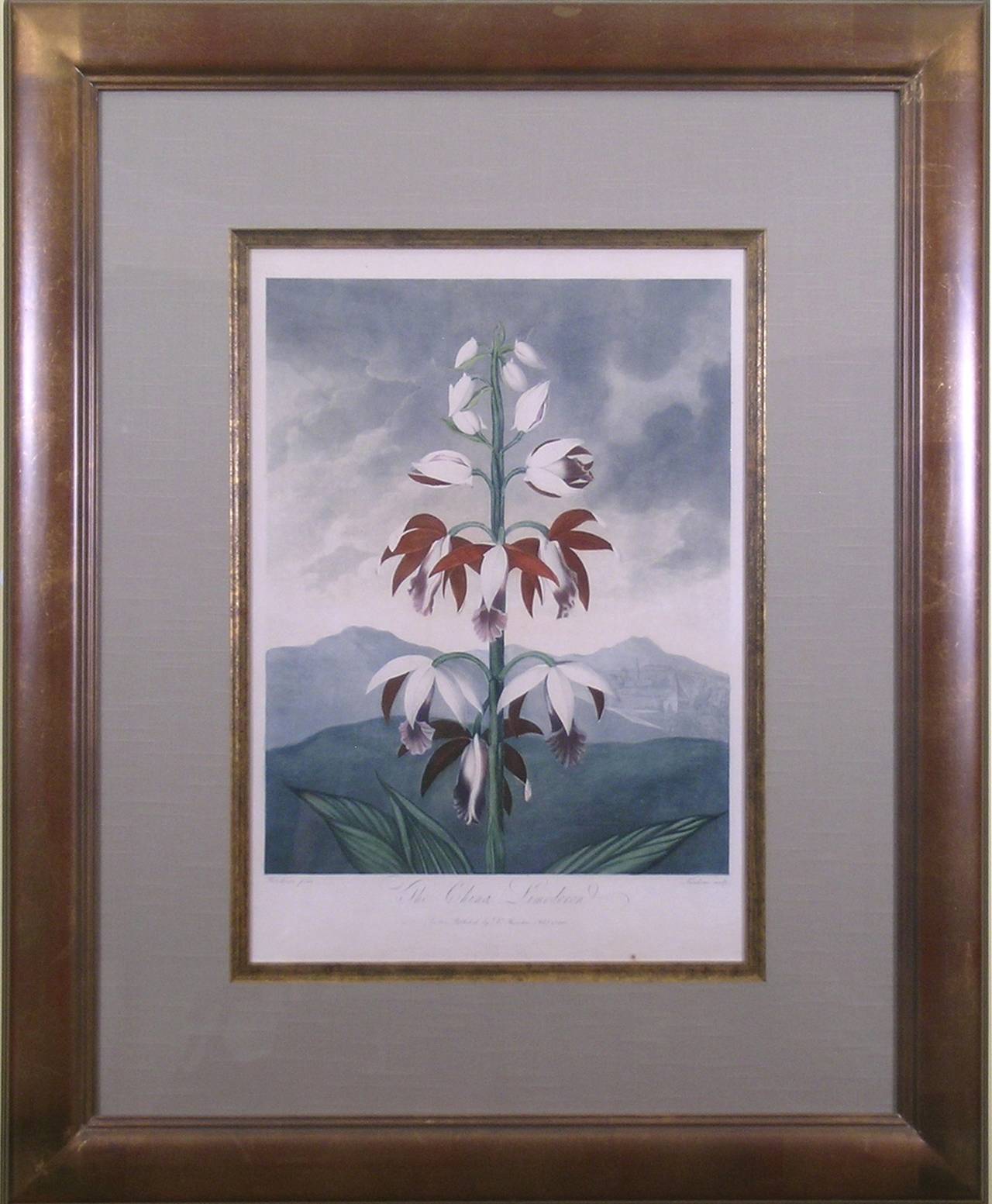Items Similar to The Blew Linnet
Want more images or videos?
Request additional images or videos from the seller
1 of 8
Mark CatesbyThe Blew Linnet1731-43
1731-43
About the Item
MARK CATESBY. (1682(83)-1749).
The Natural History of Carolina, Florida and the Bahama Islands.
Drawn by Mark Catesby and G.D. Ehret.
Etched by MarkCatesby.
London, 1731-43.
160 copies to subscribers.
II. London, 1754. Reissued by George Edwards.
III. London, 1771. Reissued by Benjamin White with Linnaean nomenclature.
Hand-colored copperplate etchings.
13.5” x 19 7/8”.
220 plates numbered in Arabic numerals, most proceeded by a T.
Nuremberg, ca1750.
Hand-colored engravings.
220 plates numbered in Roman numerals proceeded by a T.
London, 1815.
Hand-colored engravings.
220 plates numbered in Arabic numerals proceeded by a T.
In 1712, Mark Catesby came into a small inheritance, which enabled him to fulfill a long-standing dream and book passage to America. His sister was married to the Secretary to the Governor of Virginia, and was able to provide him with introductions to the leading men of the Colonies. During the next seven years, he traveled extensively to collect and record the flora and fauna of the New World. Many of the specimens were sent to England; soon they found their way into gardens in Paris, Leyden and Danzig.
Encouraged by his English friends (including many members of the Royal Society), Catesby returned in 1722 and walked over most of what are now Virginia, Georgia and the Carolinas. In 1725, he extended his research to the Bahamas. The notebooks that he filled with drawings and the packing cases of preserved specimens were the raw material for an unprecedented project: a scientific account of heretofore-unknown wildlife, with illustrations taken from life. The text recorded his personal observations, as well as theories, legends, and folktales gathered over the course of a decade.
Unable to interest sponsors for his massive Natural History, Catesby learned to etch copperplates from Joseph Goupy, a French artist then working in London. Thus, he secured both accuracy and economy. He produced all but two of the plates for his Natural History and either painted the impressions himself or closely supervised the work to insure its fidelity to his models.
Catesby’s Natural History is considered to be one of the great achievements of natural science in the 18th century. “In designing the plants,” he said, “I always did them while fresh and just gathered; and the animals, particularly the birds, I painted while alive (except a very few), and gave them their gestures…I have adapted the birds to those plants on which they fed, or have relation to. Fish, which do not retain their colours when out of their element, I painted at different times, having a succession of them procured while the former lost their colors….”
The Natural History of Carolina, Florida and the Bahama Islands became the first book devoted to the natural history of North America. An illustrated nature study of American plants and animals, it has lost none of its power to delight in the 250 years since it was first published. A monument to Catesby’s intelligence and love of nature and even his single-mindedness, it provided ornithologists and scientists, including John James Audubon who followed in Catesby’s footsteps a century later, the model for their own achievements.
Reference: Flower & Fruit Prints. Dunthorne. Da Capo Press. Washington, D.C., 1938.
Mark Catesby’s Natural History of America. McBurney. Houston, 1977.
- Creator:Mark Catesby (1682 - 1749, English)
- Creation Year:1731-43
- Dimensions:Height: 23.5 in (59.69 cm)Width: 20 in (50.8 cm)
- Medium:
- Movement & Style:
- Period:
- Condition:Clean, crisp image. Paper evenly toned. Original hand-coloring. Framed to museum specifications using archival matting, backing, hinging. Glazed with ultra-violet filtering Plexiglas. Restored antique frame..
- Gallery Location:Florham Park, NJ
- Reference Number:
About the Seller
5.0
Gold Seller
These expertly vetted sellers are highly rated and consistently exceed customer expectations.
1stDibs seller since 2014
161 sales on 1stDibs
Typical response time: 3 hours
- ShippingRetrieving quote...Ships From: Florham Park, NJ
- Return PolicyA return for this item may be initiated within 1 day of delivery.
More From This SellerView All
- Caput Phaenicopteri & Keratophyton (Flamingo Head with Coral)By Mark CatesbyLocated in Florham Park, NJMARK CATESBY. (1682(83)-1749). The Natural History of Carolina, Florida and the Bahama Islands. Drawn by Mark Catesby and G.D. Ehret. Etched by MarkCatesby. Original Hand-Colorin...Category
18th Century and Earlier Academic Prints and Multiples
MaterialsEtching, Watercolor
- Cancellus maximus Bahamensis: The Sea Hermit CrabBy Mark CatesbyLocated in Florham Park, NJMARK CATESBY. (1682(83)-1749). The Natural History of Carolina, Florida and the Bahama Islands. Drawn by Mark Catesby and G.D. Ehret. Etched by MarkCatesby. London, 1731-43. 160...Category
18th Century and Earlier Academic Prints and Multiples
MaterialsEtching, Watercolor
- The Blue Passion FlowerBy Dr. Robert John ThorntonLocated in Florham Park, NJDR. ROBERT JOHN THORNTON (c1765 – 1832). The Temple of Flora. London, 1798-1810. Painted by Reinagle, Henderson, Pether, et. al. Engraved by Ward, Caldwall, Earlom, et. al. A...Category
Early 19th Century Academic Prints and Multiples
MaterialsAquatint, Archival Paper, Archival Tape, Engraving, Handmade Paper, Plex...
- Podicipes (Grebe)By Mark CatesbyLocated in Florham Park, NJMARK CATESBY. (1682(83)-1749). The Natural History of Carolina, Florida and the Bahama Islands. Drawn by Mark Catesby and G.D. Ehret. Etched by MarkCatesby. London, 1731-43. 160...Category
18th Century and Earlier Academic Prints and Multiples
MaterialsEtching, Watercolor
- The Narrow-Leaved Kalmia (Mountain Laurel)By Dr. Robert John ThorntonLocated in Florham Park, NJDR. ROBERT JOHN THORNTON (c1765 – 1832). The Temple of Flora. London, 1798-1810. Painted by Reinagle, Henderson, Pether, et. al. Engraved by Ward, Caldwall, Earlom, et. al. A...Category
18th Century and Earlier Academic Prints and Multiples
MaterialsAquatint, Engraving, Mezzotint, Watercolor
- The China Limodoron (Orchid)By Dr. Robert John ThorntonLocated in Florham Park, NJDR. ROBERT JOHN THORNTON (c1765 – 1832). The Temple of Flora. London, 1798-1810. Painted by Reinagle, Henderson, Pether, et. al. Engraved by Ward, Caldwall, Earlom, et. al. A...Category
Early 19th Century Academic Prints and Multiples
MaterialsAquatint, Engraving, Mezzotint, Watercolor
You May Also Like
- Venice, View of the Grand Canal - Original etching and watercolor, 1831By Dionisio MorettiLocated in Paris, FRDionisio MORETTI View of the Grand Canal, 1831 Original etching Finely enhanced by hand with watercolor On vellum 26 x 41 cm (c. 10.2 x 16 inch) ...Category
1830s Academic Landscape Prints
MaterialsWatercolor, Etching
- Venice, Rialto Bridge - Original etching and watercolor, 1831By Dionisio MorettiLocated in Paris, FRDionisio MORETTI Venice, Rialto Bridge, 1831 Original etching Finely enhanced by hand with watercolor On vellum 26 x 41 cm (c. 10.2 x 16 inch) Ve...Category
1830s Academic Landscape Prints
MaterialsWatercolor, Etching
- Venice, Santa Chiara Island - Original etching and watercolor, 1831By Dionisio MorettiLocated in Paris, FRDionisio MORETTI Venice, Santa Chiara Island, 1831 Original etching Finely enhanced by hand with watercolor On vellum 26 x 41 cm (c. 10.2 x 16 inc...Category
1830s Academic Landscape Prints
MaterialsWatercolor, Etching
- Bird and Beetle - Etching and watercolor (Natural History of Birds, 1741)By George EdwardsLocated in Paris, FRGeorge EDWARDS Bird and beetle ('The Gowry Bird') Original engraving, enhanced with watercolor Printed signature in the plate Dated, 1741 28.8 x 23.3 cm Created for Volume I of the...Category
1740s Academic Animal Prints
MaterialsEngraving, Watercolor
- Greek Architecture Blueprint of Ancient Amphitheatre Cyanotype Print, WatercolorBy Kind of CyanLocated in Barcelona, ESThis is an exclusive handprinted limited edition cyanotype. Details: + Title: Ancient Roman Amphitheater + Year: 2022 + Edition Size: 50 + Stamped and Certificate of Authenticity provided + Measurements : 70x100 cm (28x 40 in.), a standard frame size + All cyanotype prints...Category
2010s Academic Still-life Photography
MaterialsPhotographic Film, Woodcut, Emulsion, Watercolor, C Print, Color, Lithog...
- John II, Count of Hainaut Holland & Zeeland (1247-1304)Located in Sydney, NSW18th Century (c1740) etching/engraving , John II, Count of Hainaut Holland & Zeeland (1247-1304)Category
19th Century Academic Figurative Prints
MaterialsEngraving, Etching
Recently Viewed
View AllMore Ways To Browse
Antique Marks
Mark Fish
Flowers Of The World Plates
18th Century American Prints
Animals And Fruit
18th C American Art
Preserved Specimen
Florida Etching
Wildlife Watercolor
Animal Print Mens
18th C New England
Antique Fruit Print
Antique Fruit Prints
George White Etching
Small French Secretary
Plate With Two Fish
C19 Drawings Prints
Wildlife Mid Century
